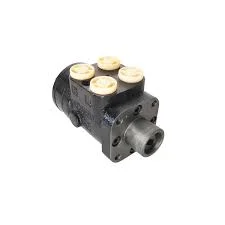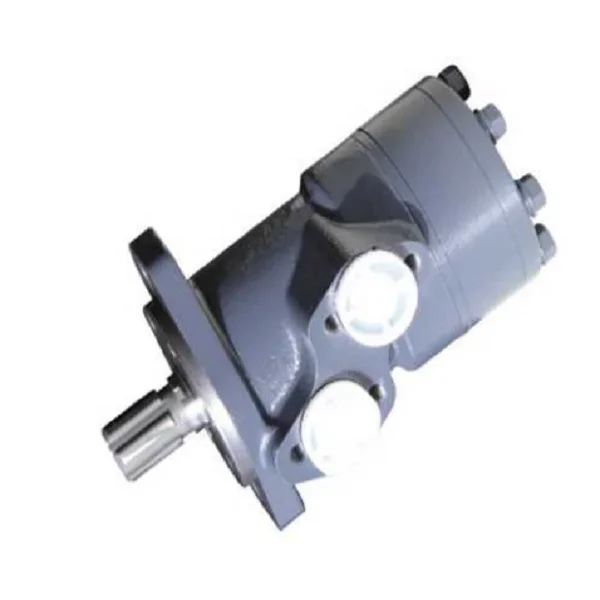Hydraulic steering gear is a critical component in various industrial and automotive applications, providing precise control and reduced effort in steering mechanisms. In this article, we will delve into the key components and working principles of hydraulic steering gear, using the 080 Series Hydraulic Steering Gear from AJA as a reference point.
Introduction
Hydraulic steering gear systems have become increasingly popular due to their ability to offer low steering torque, minimal hydraulic noise, and high reliability. These systems are designed to optimize hydraulic channel design for low pressure loss and are known for their compact structure and high strength. The 080 Series from AJA is a prime example of such a system, designed with load sensing as its basic type.

Key Components of Hydraulic Steering Gear
1. Body Flange and Housing
The body flange integrated design of the AJA 080 Series ensures a compact structure with high strength. The housing is a critical component that encloses all the internal parts of the steering gear, providing a robust and durable framework.
2. Hydraulic Channels
The optimized hydraulic channel design in the 080 Series is crucial for reducing pressure loss. This design ensures efficient fluid flow, which is essential for the smooth operation of the steering system.
3. Load Sensing Mechanism
As a load sensing system, the 080 Series can adjust the steering effort based on the load conditions. This feature is particularly useful in applications where the load on the vehicle can vary significantly, ensuring optimal steering performance under all conditions.
4. Pressure Regulating Valves
These valves control the maximum inlet pressure, which for the 080 Series is rated at 16MPa. They play a vital role in maintaining the system's performance by preventing excessive pressure that could lead to damage.
5. Back Pressure Relief Valve
The maximum continuous back pressure for the 080 Series is 2.1MPa. The back pressure relief valve ensures that the system does not experience pressure build-up that could lead to leaks or damage.
6. Torque Output
The steering torque is a critical performance parameter. The 080 Series offers an ultra-low torque type ranging from 1.1 to 1.8Nm, which contributes to the low-effort steering characteristic of the system.
Working Principles of Hydraulic Steering Gear
A. Power Transmission
Hydraulic steering gear operates on the principle of power transmission through hydraulic fluid. The system uses the pressure exerted by the fluid to transmit force from the input to the output, which in this case is the steering mechanism.
B. Conversion of Rotational Motion
The input rotational motion from the steering wheel is converted into linear motion at the output, which is then used to turn the wheels. This conversion is facilitated by the hydraulic system's ability to amplify or reduce the input force as needed.
C. Load Sensing
The load sensing feature of the 080 Series allows the system to adjust the steering effort based on the load. When the load increases, the system compensates by increasing the hydraulic pressure to maintain a consistent steering feel.
D. Pressure Regulation
The pressure regulating valves in the system ensure that the hydraulic pressure does not exceed the maximum inlet pressure. This is crucial for protecting the system from damage due to over-pressurization.
E. Temperature Management
The maximum system temperature for the 080 Series is 93°C. Proper temperature management is essential to prevent the degradation of hydraulic fluid and to ensure the longevity of the system.
F. Oil Cleanliness
The recommended oil cleanliness for the 080 Series is ISO 18/13/10. Clean oil is vital for the smooth operation of the hydraulic system, as contaminants can cause wear and reduce the efficiency of the system.

Advantages of Hydraulic Steering Gear
1. Reduced Effort
Hydraulic steering gear significantly reduces the effort required to steer, especially at high speeds or under heavy loads.
2. High Precision
The system offers high precision in steering, which is crucial for applications that require accurate control.
3. Durability
The compact and robust design of the 080 Series ensures long-lasting performance and reliability.
4. Adaptability
The load sensing feature makes the system adaptable to varying load conditions, providing optimal performance in different scenarios.
5. Low Noise Operation
The low hydraulic noise of the 080 Series contributes to a quieter operation, which is beneficial in noise-sensitive environments.
Conclusion
Hydraulic steering gear, such as the 080 Series from AJA, is an essential component in modern industrial and automotive applications. Its key components and working principles combine to offer a system that is low in torque, high in precision, and adaptable to various conditions. Understanding these aspects is crucial for anyone involved in the design, maintenance, or operation of hydraulic steering systems.
At Shanghai AJA Technology Co., Ltd., we are committed to providing high-quality products and excellent customer service. Whether you need assistance with hydraulic motor cleaning or any other hydraulic component-related queries, our knowledgeable staff is ready to help.
Welcome to inquiry if you need to know more about hydraulic steering gear details or order wholesale.

